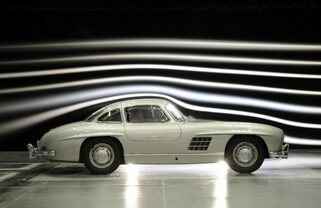 Last time we revisited two promising automobile developments from a few years back that promised great strides in fuel economy. But in spite of having sound engineering, scalable designs and even having working prototypes, neither technology made it into the mainstream. Today we’re going to look at two more automobile technologies that have also been around for a while but only in very niche circles although we feel that these techs deserve wider adoption in the industry. Electric Superchargers Electric superchargers (e-superchargers for short) are forced induction device similar to regular superchargers and turbochargers. But unlike a regular supercharger which is powered by the engine via belts, chains or gearing, and also unlike a turbo which is spun by exhaust, an electric supercharger is powered by an electric motor. The biggest benefit is instant boost like a supercharger without sapping power from the engine and none of the lag of turbos. It’s part of a growing trend of electrifying most sub-systems in a car. Hydraulic systems like power steering and brakes are being replaced by actuators while peripheral systems that take power directly from the engine like the AC compressor and supercharger are getting their own electric motor. This means more of the engine’s power go into the drivetrain. And for the new kind of supercharger, getting power from a dedicated electric motor means boost availability across the whole rev-range. The benefits of an electric supercharger are particularly compatible with small engines. As engineers are now utilizing forced induction to increase both power and efficiency of smaller displacement engines, they run into problems powering the blower with the lower pressure exhaust. Electric motor powered superchargers do get around this. The challenge is that the current 12-volt standard is fast becoming inadequate in providing for the demand of an increasingly electrified system. 24, 36 and even 48 volt systems with ever larger battery capacities (which are common in electric and hybrid engine systems), will need to be the norm to support electrifying engine peripherals including e-superchargers. As battery production rises and the prices of batteries continue to drop, electrified components like the e-supercharger will be the first to be standardized in regular production cars, even before hybrid engines become the norm. We’ll just have to wait and see. Aerodynamics: Vortex Generators In the automotive aerodynamics, car design is always a compromise between wind-cheating, engineering, safety regulations, practicality, and consumer tastes. That’s why most automobiles are shaped less like flattened tear-drop shapes and more like aggregates of rectangular boxes with rounded corners. Now you know why most new cars look alike. Going a bit into Aero101, much of your car’s effort goes into overcoming wind resistance at higher speeds. Current auto design leaves a substantially low-pressure wake behind a vehicle as it moves ahead. Higher head-on pressures with lower back pressures around a fast moving car body mean the engine has to work harder to make the car plow through the air. Ideally, car designers want to keep the flow of air around the car as “together” as possible, minimizing turbulence as the flow lines converge behind the vehicle and keeping the negative pressure wake as small as possible. This is a tall order considering the steep drop-offs in the trailing body lines of cars. One way to help keep airflow together is with the use of vortex generators (VGs). These are usually small shallow fins or protrusions placed across the moving body’s surface, transverse to the airflow. They create a layer of narrow vortices on the body’s surface that has a net effect of attaching the surrounding airflow to the body shape more, lessening the turbulence created in a moving body's wake. Vortex generation for fluid dynamics advantages have been observed in nature and the application has been long used in aeronautical wing designs. Although there has been application of vortex generation in the automotive world, they have been niche at best. Example are underbody diffusers in racing and street modification, tack-on aftermarket accessories, and modest applications with a few performance production cars. VGs are simple designs and pose little manufacturing challenge. They can be stamped on to body panels or individually fixed on surfaces. Their improvement on the aerodynamics of vehicles - and therefore overall fuel economy - vary, but even the conservative figures put it to 11percent, a significant number. Why are we not seeing more production cars fitted with VGs? Because they are subjectively unsightly and difficult to incorporate seamlessly in a cars overall outward design. Sadly, it’s a case of design tastes taking priority over function; a design challenge quite doable but had not been taken seriously enough.
0 Comments
Leave a Reply. |
AuthorSmith's Auto Repair serves Dayton, Ohio and the surrounding communities using digital inspection service for all its customers ArchivesCategories |
 RSS Feed
RSS Feed